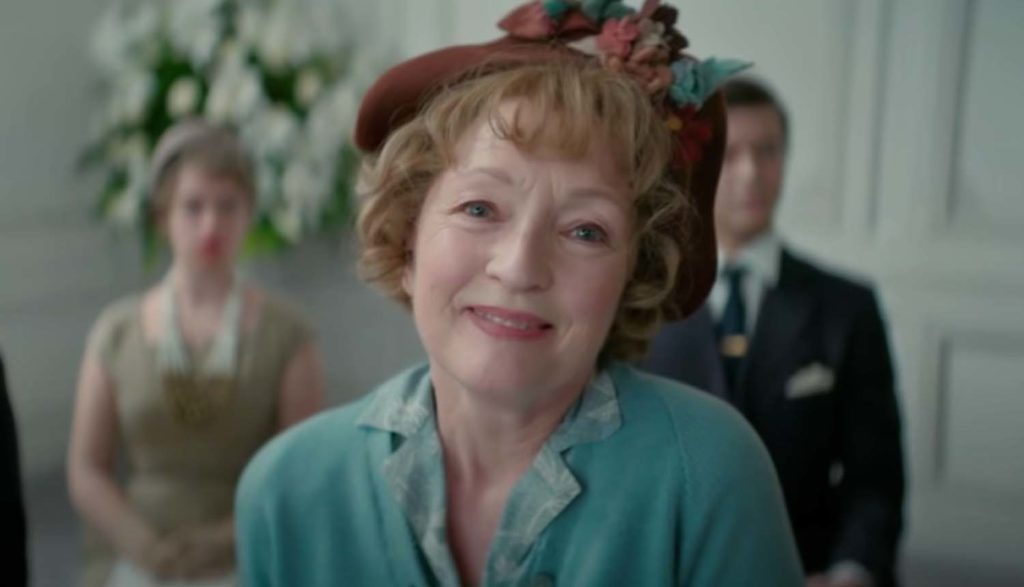Mrs Harris Goes to Paris, the latest film from director Anthony Fabian is the cinematic equivalent of comfort food: it’s nearly always good, doesn’t offend too much, and is easy to get through. The film is a lovely, endearing, and a little bit sickening dream that blends post-war anguish, Parisian trash strikes, and Carrie Bradshaw-level fetishization over clothes.
A woman follows her dreams all the way from London to Paris
A widowed Englishwoman in 1950s London plays the lead role, played by Paul Thomas Anderson’s Phantom Thread’s Leslie Manville, a veteran of Mike Leigh’s working-class dramas. Lonely but cheerful, her grief at the loss of her husband in World War II is interrupted by nights out with Vi (Ellen Thomas) and Archie (Arnold Schwarzenegger), her closest friend and womaniser (Jason Isaacs, taking a break from Harry Potter and stock villain roles). While working with a customer, Mrs Harris falls infatuated with one of her client’s Christian Dior outfits, and she sets out to get one made for her specifically.
For some reason or another, she has managed to amass enough money to travel to Paris and achieve her lifelong sartorial ambitions.
Mrs Harris makes friends with the handsome accountant Andre (Emily in Paris’ Lucas Bravo), the stunning model Natasha (Alba Baptista, putting away her habit from Warrior Nun), and a kind widower named the Marquis de Chassagne (Lambert Wilson from The Matrix Resurrections). In Paris, Mrs Harris finds her way past the guarded gates of Dior’s luxury couture headquarters.
So, of course, Isabelle Huppert is the villain in this film. Even after the final disclosure, it still makes you question why one of France’s most celebrated actresses would take on such an unrewarding job as Dior’s narcissistic manager. In this film, you’ll find a dreary romance, a Greek chorus of homeless people, a frantic attempt to save a loved one, and a “You go, lady!” scene that is so out of place and silly that you can’t help but cringe. Mrs Harris does speak those lines in the movie, so take my word for it. A lot of effort is been put into creating an authentic sense of working-class London during the initial years of Queen Elizabeth II’s reign in this film’s first half. Mrs Harris’ lonely existence is balanced by her vibrant social life, which includes dance and horse-betting, in this scene.
Problems occur when filmmakers overplay their hand in the film’s second half, turning Mrs Harris into an end-all-be-all character. Distasteful and detracting from what Manville and the film had accomplished previously, that’s all. Mrs Harris’ solution to everyone’s problem, including the fashion industry’s, must be so saccharine sweet. There is nothing wrong with the movie focusing on her personal life and what it means to be a widow and expose yourself to a new relationship in the film.
Simply unacceptable as an acceptable state of affairs
I’m afraid that’s not the case. Mrs Arris Goes to Paris, the first in a series of adventures for the old widow, was based on a 1958 novel by the same name. She also travels to New York City, Parliament, and the Iron Curtain. Angela Lansbury starred as the titular character in the 1992 television movie adaptation of the first novel, which was the most popular and was converted into a one-hour TV programme in 1958. It’s possible that’s why the movie feels so eerily out of place now. No convincing argument can be made for why this adaption was necessary, and the content isn’t ageless. Mrs Harris Goes to Paris doesn’t provide anything fresh to merit a second go-around, even if it has succeeded in the past. Theatres around the United States are presently showing Mrs Harris Goes to Paris.

